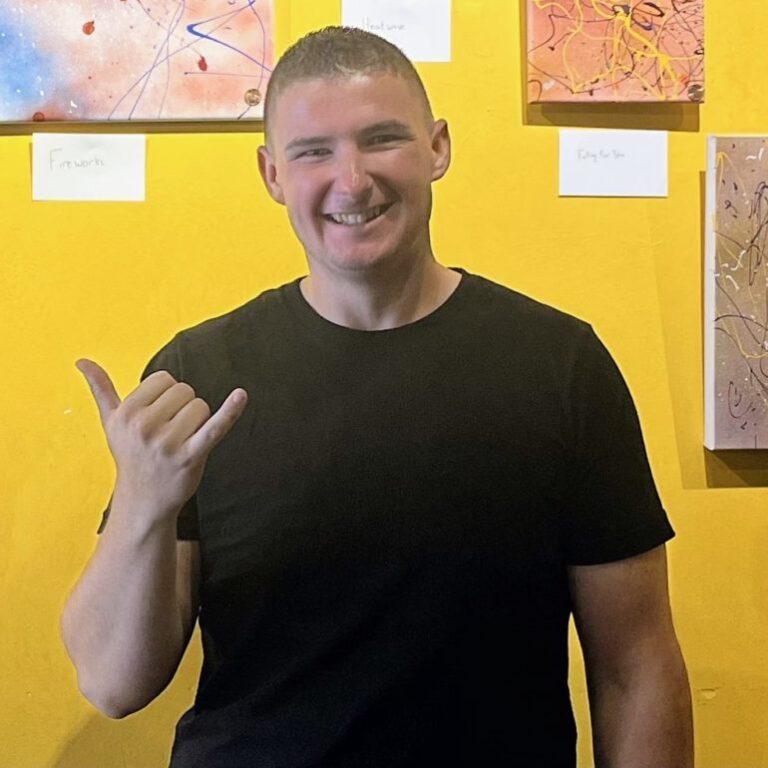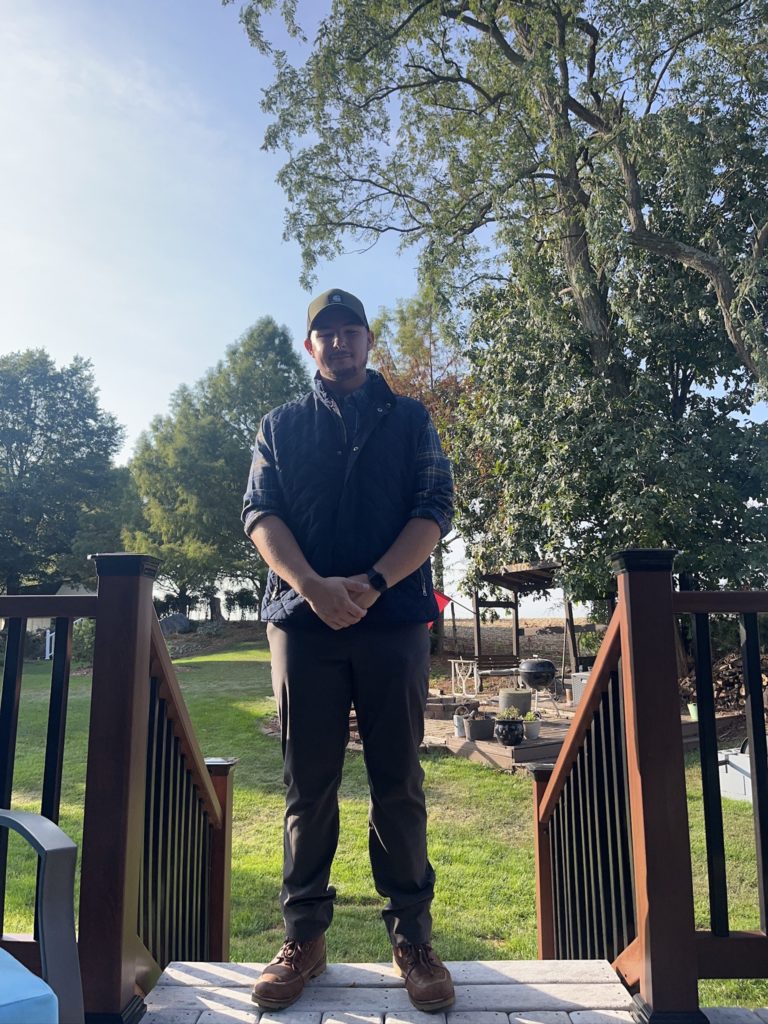Patient Stories
Meet Dylan
Virginia, United States

Living with Wilson’s Disease has given me a new purpose in life.
Dylan is 30 years old and lives with Wilson’s disease. He experienced his first symptoms when he was in the prime of his life: 29 years old, married, with steady and fulfilling work. He enjoyed varied interests, including football, cooking, and outdoor pursuits, including kayaking and fishing. In just one year, his life shifted dramatically.
Wilson’s disease is a rare inherited disorder that causes copper to accumulate in the liver, brain, and other vital organs. Symptoms can range from fatigue, lack of appetite and muscle weakness, to kidney disease and scarring of the liver (cirrhosis) or liver failure. Psychological manifestations range from depression and irritability to bipolar disorder and psychosis. If left untreated, Wilson’s disease may be fatal.
Dylan first noticed he was having trouble swallowing, followed by a subtle hand tremor in February 2022. This, along with fatigue and involuntary muscle contractions, prompted him to see a doctor. Due to his non-specific symptoms, the first doctor he saw diagnosed him with anxiety. The second doctor he met with recommended that Dylan drink tea for relaxation.
Dylan started to have difficulty holding utensils to eat. Then, he could no longer write his own name. Just three months after experiencing the first symptoms, Dylan resigned from work due to extreme exhaustion and an inability to control his motor skills. “I couldn’t even put a sticker on a box, much less type or stay awake enough to concentrate on a phone call. What good was I to anyone?” explained Dylan.
Dylan’s continued to look for answers. After an MRI, a doctor noted a “panda face” image, a tell-tale sign of Wilson’s Disease due to copper deposits, but she neglected to investigate. Dylan was increasingly irritable and unable to control his emotions, constantly lashing out. At one of his lowest moments, he was screened for drug use in an emergency room without his knowledge or consent.
Over the next few months, Dylan’s marriage deteriorated, and he moved in with his parents. He couldn’t feed himself, let alone go to work or care for himself. “I could not get out of bed for two months,” Dylan recalled. “I worked my entire life. I have always contributed. Now I was bedridden and did not have control of my body. I didn’t want to live anymore.”

Finally, after consulting with ten different doctors over the course of several months, Dylan saw a specialist who stated, “This is not anxiety.” She checked Dylan’s copper levels and diagnosed him with Wilson’s disease. She began the process of eliminating excess copper from Dylan’s organs with special medications and a strict diet – neither of which is simple nor straightforward, but Dylan is grateful to have an accurate diagnosis.
Dylan’s copper levels continue to fluctuate, and he is still unable to work.
“I struggle many days to even get out of bed,” he says.
Dylan hopes that sharing his story will increase awareness of the debilitating symptoms of Wilson’s Disease. This is also a way to show gratitude to those who acknowledged his struggles and those who helped him – sometimes unexpectedly – along the way. During one of his lowest moments during his journey, a homeless man offered his own money to Dylan out of concern. Today, Dylan volunteers at a food pantry and visits people living in a nearby nursing home.
“Helping others gives me a sense of purpose to get out of bed,” Dylan says. “I now feel like I should do everything that I can to help others as much as possible.”
He has also discovered a love for painting. Dylan’s signature style involves pouring paint on a canvas to create unique works of art, which also serves as a workaround for his poor fine motor control.
“I can’t sign my paintings, so I glue a penny to each one,” Dylan explains. “It’s my signature because pennies contain copper.”

